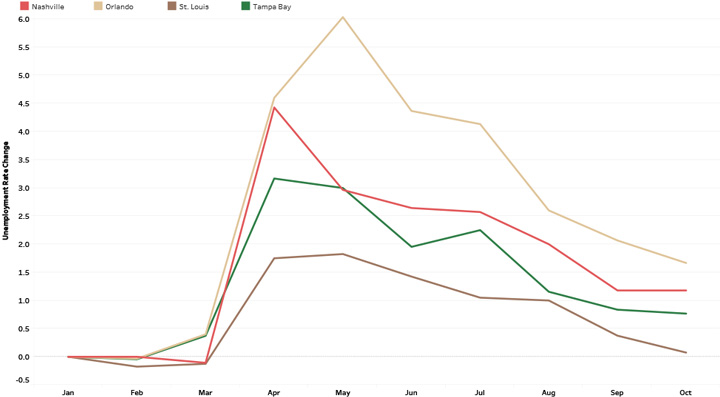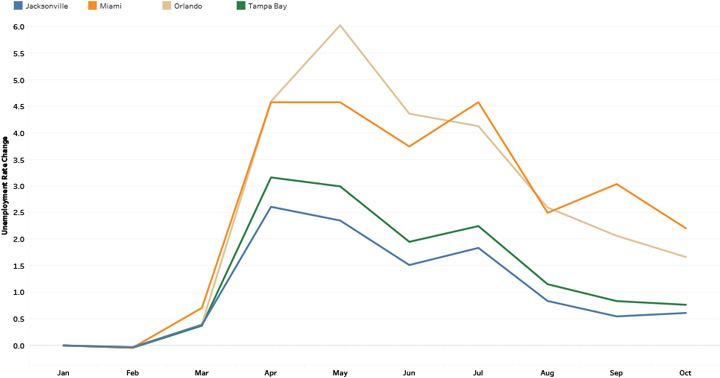2021 E-Insights Report
COVID-19 Impact on Unemployment Rate
The unemployment rate percentage change measures the monthly percentage change in the unemployment rate with respect to that in January 2020. Researchers tracked consumer spending over 11 months for all 20 MSAs.
The unemployment rate shows how many people in the labor force who are seeking a job but do not have a job. Researchers calculated the percentage change in unemployment rates compared to January 2020 before the pandemic. In the economic competitiveness section of the report, they show the trend in unemployment rates annually and competitively among the MSAs. However, comparing the raw unemployment rates do not provide a complete picture. Calculating the percentage change helps provide a more accurate picture of when each MSA started to see the impact of COVID-19 on its unemployment rate. Doing so provides an easier way to see the impact before, during and after the pandemic.
Researchers gathered data from the U.S. Bureau of Labor Statistics, pulling the monthly unemployment rates for 20 MSAs from January through September. Starting in March, the unemployment rates in all MSAs rose sharply; not one MSA has seen rates have not fall back to those seen in January.
The impact of COVID-19 is evident. Most cities that rely heavily on tourism and service industries have been hit very hard.
Insights
- The Tampa Bay region has recovered well when compared to Miami and Orlando.
- Nashville reported the highest recovery in unemployment rates during the COVID-19 months from No. 18 (June) to No. 3 (September).
- The St. Louis MSA experienced the lowest impact from COVID-19 related to unemployment. Miami and Orlando experienced the greatest impact.
- Jacksonville has slightly been less impacted than the Tampa Bay Region in terms of employment rate, doing better than any other Florida MSA.
Unemployment Rate- Percentage Change

Unemployment Rate- Percentage Change - Florida
